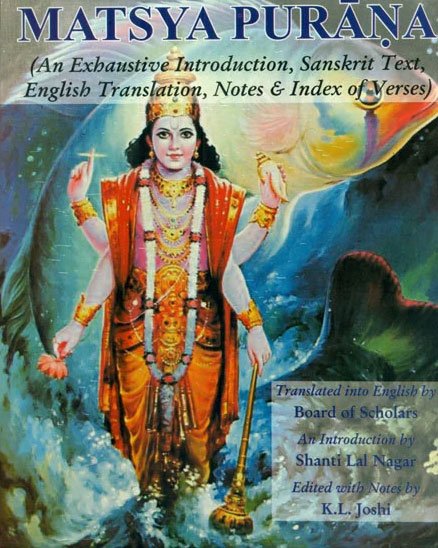The Matsya Purana (critical study)
by Kushal Kalita | 2018 | 74,766 words | ISBN-13: 9788171103058
This page relates ‘Krishnashtami-vrata’ of the English study on the Matsya-purana: a Sanskrit text preserving ancient Indian traditions and legends written in over 14,000 metrical verses. In this study, the background and content of the Matsyapurana is outlined against the cultural history of ancient India in terms of religion, politics, geography and architectural aspects. It shows how the encyclopedic character causes the text to deal with almost all the aspects of human civilization.
Part 4.3a - Kṛṣṇāṣṭamī-vrata
In the 56th Chapter of the Matsyapurāṇa, greatness of Kṛṣṇāṣṭamīvrata is described. This vrata is observed in aṣṭamī tithi of kṛṣṇāpakṣa (eighth day of dark fortnight) in the month of Mārgaśirā for getting victory, peace and emancipation. The devotee worships twelve different forms of Śiva in different months for one year.[1]
Thus, he, on the kṛṣṇaṣṭamī, i.e., eighth day of the dark fortnight in the month of Mārgaśirā, worsrships Śaṅkara. In Pauśa, Śambhu is worshipped. In Māgha, Maheśvara is worshipped, in Phālguna, Mahādeva is worshipped, in Caitra, Sthānu is worshipped, in Vaiśākha, Śiva is worshipped, in Jyaiṣṭha, Paśupati is worshipped, in Asāḍha, Ugra is worshipped, in Śrāvaṇa, Sarva is worshipped, Trayambaka is worshipped in Bhādra, Hara is in the month of Asvina and Īśāna is worshipped in Kārtika.[2]
The devotee gives feast to the learned and pious brāhmaṇas and at the conclusion of the vrata curds, grain, canopy and cāmara are given in charity.[3] Brāhmaṇas are also given five gems with a vase of water, black cow, gold and clothes.[4] In case of poor devotee only a cow is to be given instead of all.[5] Though kṛṣṇāstamī tithi is mainly observed for Lord Kṛṣṇa, but in this vrata Lord Śiva is worshipped and this is an ingenious way of bringing about synthesis between the followers of Śiva and Kṛṣṇa.
Footnotes and references:
[1]:
Matsyapurāṇa, 56.2-6
[2]:
Ibid., 56.3
[3]:
Ibid., 56.233
[4]:
Ibid., 56.10
[5]:
Ibid., 56.11
